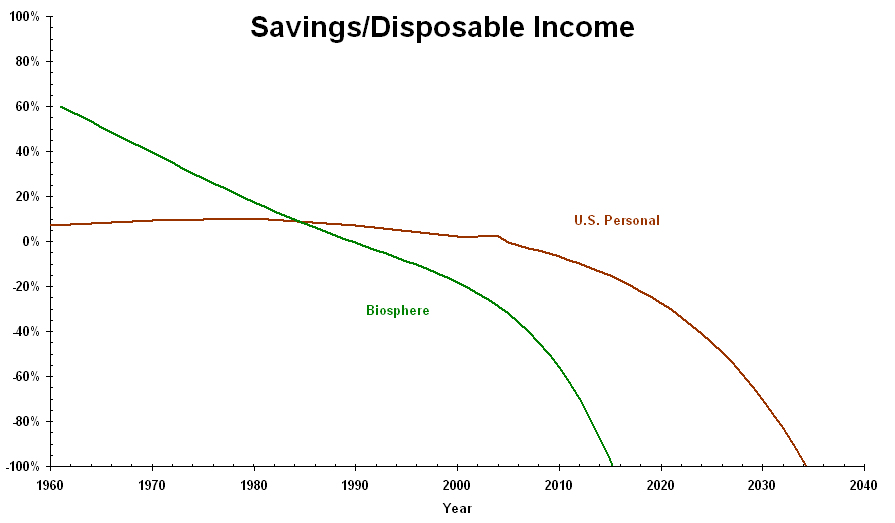|
Crisis of Debt In 2000, average American workers, who comprised about half the nation's population (half of the non-workers being children), annually spent half their time (after eating and sleeping) in work-related activities (including commuting). Since 2005, Americans have spent more money than their disposable income. Debt will exceed disposable income in less than 30 years if current trends continue (not counting the growing government debt, which Americans are all responsible for). Economically, American workers would become slaves, because no one would extend them any more credit and they would have to spend all their previously “free” time paying back what they took. Even if every American (children included) started working at that point, debt would once again equal disposable income in another ten years. Humanity's ecological prospects mirror the American worker's economic prospects, and the time frames are remarkably similar. Nature's economy, the Earth's biosphere, uses the equivalent of human barter: over the course of their lifetimes, members of species trade goods and services rather than money (“goods” are created and then recycled from renewable resources, using energy from the Sun). Because there is no natural equivalent of money, credit – any agreement to trade equivalent goods or services in the future for goods or services received in the present – is on the honor system. Humanity has attempted to bypass this system by extracting non-renewable resources and creating goods that cannot be recycled by the biosphere (from the biosphere's perspective, they are by definition “waste”). We have also denied the biosphere the use of our own matter to recycle and use elsewhere. Our waste began to overwhelm the biosphere around 1989, analogous to the point where American workers began going into debt. By my estimates, within 30 years from that time the biosphere will be trashed (in every sense of the word), and there will be no way humanity can “earn” enough to pay for what we've taken. The following graph illustrates these trends:
For more, see my essay. |
